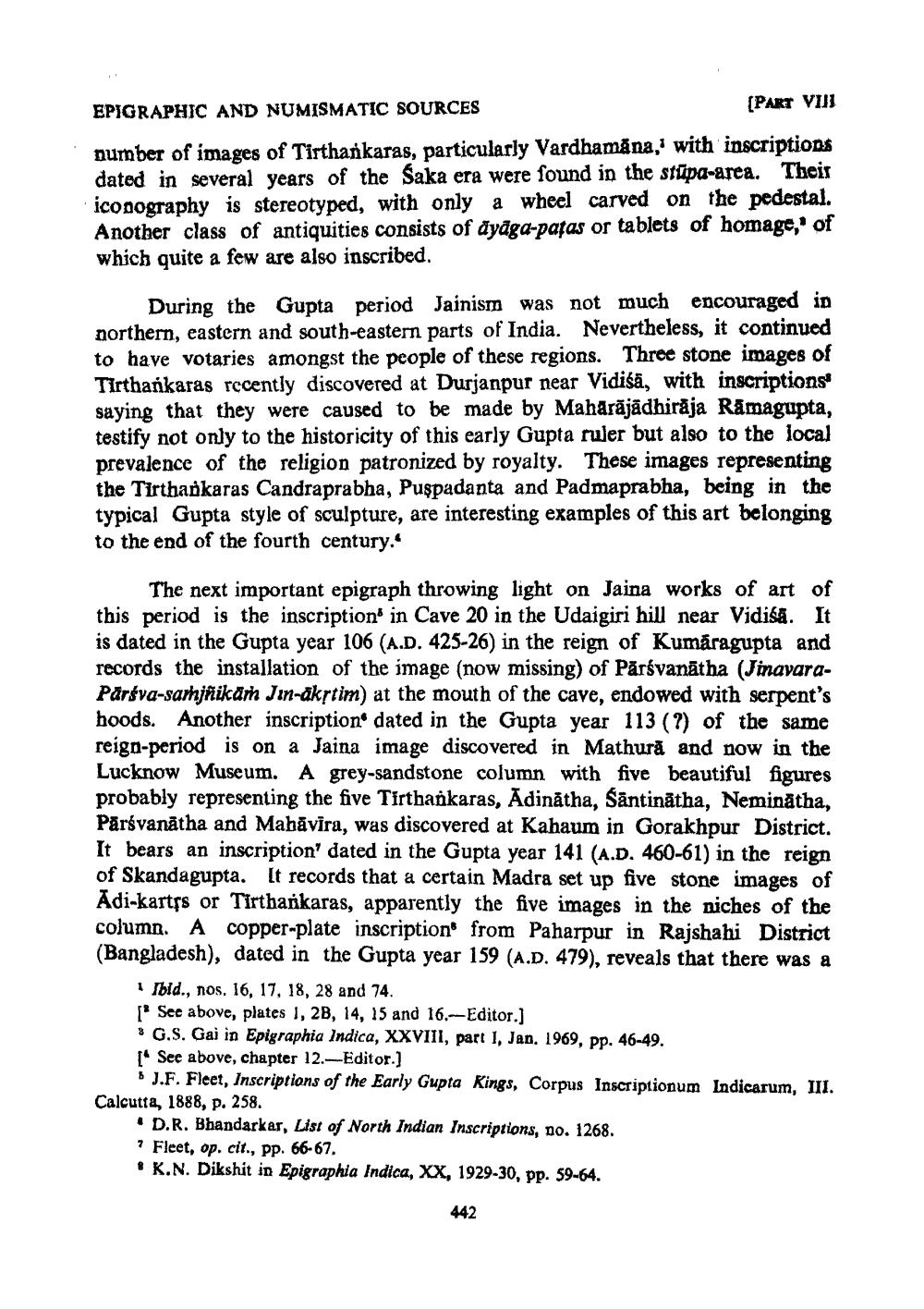________________
EPIGRAPHIC AND NUMISMATIC SOURCES
(PART VIII number of images of Tirthankaras, particularly Vardhamana,' with inscriptions dated in several years of the Saka era were found in the stupa-area. Their iconography is stereotyped, with only a wheel carved on the pedestal. Another class of antiquities consists of dyāga-patas or tablets of homage,' of which quite a few are also inscribed.
During the Gupta period Jainism was not much encouraged in northern, eastern and south-eastern parts of India. Nevertheless, it continued to have votaries amongst the people of these regions. Three stone images of Tirtharkaras recently discovered at Durjanpur near Vidišā, with inscriptions saying that they were caused to be made by Mahārājādbirāja Rāmagupta, testify not only to the historicity of this early Gupta ruler but also to the local prevalence of the religion patronized by royalty. These images representing the Tirthankaras Candraprabha, Puspadanta and Padmaprabha, being in the typical Gupta style of sculpture, are interesting examples of this art belonging to the end of the fourth century.
The next important epigraph throwing light on Jaina works of art of this period is the inscription in Cave 20 in the Udaigiri hill near Vidiša. It is dated in the Gupta year 106 (A.D. 425-26) in the reign of Kumāragupta and records the installation of the image (now missing) of Pārsvanātha (JinavaraParsva-sarjñikar Jin-akstim) at the mouth of the cave, endowed with serpent's hoods. Another inscription dated in the Gupta year 113 (?) of the same
period is on a Jaina image discovered in Mathurā and now in the Lucknow Museum. A grey-sandstone column with five beautiful figures probably representing the five Tirthankaras, Adinătha, Säntinātha, Neminátha, Pārsvanātha and Mahăvira, was discovered at Kahaum in Gorakhpur District. It bears an inscription' dated in the Gupta year 141 (A.D. 460-61) in the reign of Skandagupta. It records that a certain Madra set up five stone images of Adi-kartęs or Tirtharkaras, apparently the five images in the niches of the column. A copper-plate inscription from Paharpur in Rajshahi District (Bangladesh), dated in the Gupta year 159 (A.D. 479), reveals that there was a
Ibid., nos, 16, 17, 18, 28 and 74.
Sec above, plates 1, 2B, 14, 15 and 16.-Editor.] * G.S. Gai in Epigraphia Indica, XXVIII, part 1, Jan. 1969, pp. 46-49. [* See above, chapter 12.-Editor.)
J.F. Fleet, Inscriptions of the Early Gupta Kings, Corpus Inscriptionum Indicarum, III. Calcutta, 1888, p. 258.
• D.R. Bhandarkar, List of North Indian Inscriptions, no. 1268.
Fleet, op. cit., pp. 66-67. • K.N. Dikshit in Epigraphia Indica, XX, 1929-30, pp. 59-64.
442




